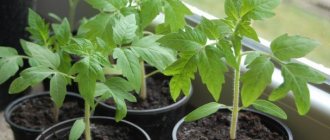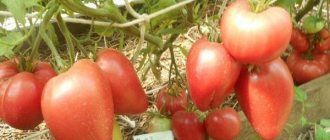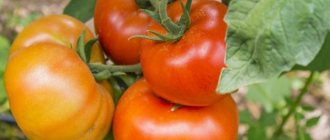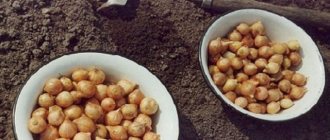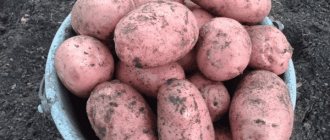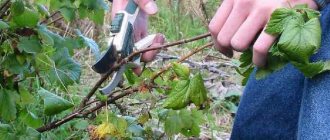There are many varieties of tomatoes that you can easily grow at home. The crop is not susceptible to pest attacks, bad weather conditions and will bring a good harvest.
The growing process is no more difficult than for tomatoes from the garden; it is only important to choose the appropriate variety, which, even in winter, will be able to pamper the owner with fresh fruits.
Special varieties
The hybrid selection method is based on constant trial and error, it is caused by the individual climatic conditions in each room. These low-growing and dwarf varieties will feel great on a small windowsill.
Minibel
It is represented by a bush reaching a height of no more than 30 cm. Its fruits, collected in small clusters of 8 samples, weigh up to 40 g each.
Florida Petite
A low crop with small tomatoes, which are collected in a brush of 15-20 pieces. They are very sweet, an individual fruit weighs up to 40 g.
Balcony miracle
The most common domestic variety. Its pink tomatoes ripen 2.5-3 months after planting. The fruits are not large - 20-30 g each.
Balcony red
It is formed by a very fruitful bush, growing up to 30 cm. Mini tomatoes are bright red and will grow within 3 months after planting. It is noteworthy that the fruits of this variety emit a strong aroma.
Bonsai
Each time it ripens, it will produce 500-600 g of tomatoes. The bush of this low-growing crop does not grow higher than 30 cm. Representatives of the variety do not need insects to transfer pollen, since they are self-pollinating.
Bonsai micro
It is considered the smallest among cherry tomatoes. The average size of a bush is only 15 cm. It is often hung in a basket and has a more decorative purpose.
Pinocchio
It will produce its first harvest within 3 months after planting. The hybrid bears fruit with small, aromatic tomatoes.
Balconies Yelou
Grows up to half a meter in height. The fruits are small, mostly yellow in color, and grow within 3.5 – 4 months. Round in shape, sweet in taste.
Pearl red or yellow
Famous for its decorative parameters. It grows up to 0.5 m and bears small red tomatoes. A single specimen can weigh up to 50 g and taste sweet.
Native
Bears fruits of 180 g each. They have a characteristic raspberry hue. It is famous for its unpretentiousness - it is able to tolerate coolness, and is an early species.
Igranda
Fruits in round tomatoes up to 150 g each. The variety can easily withstand sudden changes in weather and temperature conditions.
Hermitage
It is preferable to plant in the northwestern regions. Tomatoes grow up to 100 g on it.
Russian troika
It is represented by bushes up to 60 cm tall. Notable for its large, aromatic fruits weighing up to 300 g. It is recommended to start with 2-3 species for comparison, and then plant those that best suit the apartment’s climate.
Selecting a location
Light-loving plants will begin to lose their buds when there is insufficient lighting, so it is preferable to place them on a balcony or windowsill on the south side. Strong sunlight can harm a young plant, so in the afternoon, during the period of greatest sun activity, it is worth shading the bush or moving it to the eastern or western sides. Additional light is also recommended for tomatoes; the best option is fluorescent lamps. It is worth placing an artificial source while maintaining a minimum distance of 30 cm from the plant. The lack of light in the morning and evening should be compensated for, not forgetting that for tomatoes the daylight hours should last about 15 hours.
Pre-sowing seed preparation
The procedure includes:
- Soak;
- Germination;
- Hardening.
Soaking is done to destroy pathogens. The operation takes 30 minutes. Then it is recommended to rinse the seeds in filtered water.
Germination is carried out in a damp gauze cloth or cotton pad. Afterwards, the material is covered with polyethylene and placed in a warm place for 2-3 days until germination.
The hardening procedure applies to seeds that have already hatched but have not yet sprouted. It increases the crop's resistance to temperature changes. Sequencing:
- Wrap the seeds in gauze;
- Place in container;
- Tie the bag without completely cutting off the oxygen;
- Keep it in the refrigerator at night and take it out during the day;
- Repeat the operation 4-5 times.
Let's start growing
In order for tomato seeds to germinate quickly, they need to be soaked. It is enough to prepare a weak solution of manganese and place the planting material in it for 20 minutes. Thanks to soaking, you can determine which seeds will not sprout: spoiled ones will float (they must be thrown away). Wrap good seeds in a wet towel and wait until they sprout a little.
If the tomato seed manufacturer has applied a protective agent, there is no need to soak them; you can plant them immediately.
Containers for planting
To plant seeds, it is better to take transparent plastic cups - this way you can control watering. Drainage holes are not useful in this case.
Next, fill the glass with soil, leaving a couple of centimeters of free space at the top.
We are landing
- In a glass with soil, you need to make a 2 cm depression, put 2 grains there and fill it with soil.
- The next step is to cover the glass with cling film to create a greenhouse effect and place it in a dark room. The optimal temperature is 25°C.
- After 4 days, when small seedlings appear, they must be moved to the place where they will grow (window or loggia). Thanks to artificial lighting, the plant will not stretch intensively (which should not be allowed at this stage).
- It should be watered when the top lump of earth dries out a little. This way you can avoid the occurrence of various tomato diseases.
The greatest danger to the crop is the fungus. It occurs as a result of dampness and lack of sunlight.
Preparing containers for planting sprouted seeds
After moving the seedlings to the window, you should wait for a few leaves to appear, then you can safely transplant the tomatoes into large flower pots. The container size should be about 5-6 liters, this is quite enough. Fill the bottom of the pot with your choice: expanded clay pebbles or small pieces of polystyrene foam, then add a layer of sand (2 cm), and cover the rest with earth.
Planting seedlings from plastic cups into pots
- Before you remove the germinated seeds, you should moisten the soil in which they are located. This way, when pulling it out of the cup, you can protect the root system from damage as much as possible.
- Next, you should move the bush into a container where it will continue to grow. During this procedure, you should be very careful, do not shake off excess soil - transfer the seedlings along with the soil into a pot;
- After the seedling has been moved to its permanent habitat, cover it with soil, not reaching 8 cm from the edge of the pot - as it grows, there will be a reserve where you can add soil.
Caring for tomatoes on the windowsill: basic rules and growing conditions
In order for the fruit to ripen in a timely manner, the plant must be provided with watering, feeding and regular ventilation of the room; these will have a beneficial effect on the development process of the bush.
Temperature and humidity
Favorable temperature range during the day is +22...+26 °C, and at night +15...+16 °C. At the same time, the recommended air humidity level is 65%. In winter, pots with bushes should be somewhat removed from the glass, as they can be damaged by cold air coming from the window.
In case of increased dryness, moisturizing by spraying is allowed. However, at low temperatures, excessive moisture provokes a number of diseases. Spraying is necessary exclusively for foliar feeding and treating tomatoes against ailments and pests.
Feeding and watering
It is important to prevent liquid from getting on the stems when watering. Its regularity is 2 times every 10 days. Settled and filtered water is ideal. During the flowering period, watering is suspended until the ovaries appear. Mineral fertilizers should be applied for the first time no earlier than 20 days after the dive. The best option is potassium humate, diluted according to the manufacturer’s recommendations. It is worth feeding only on the second day after watering, the regularity of feeding is once every 2 weeks. For adult bushes, both root and leaf feeding is allowed, but such fertilizer is contraindicated for young tender seedlings.
Shaping (stepping) and tying
Thanks to the stable trunk and lack of branching, homemade tomato varieties do not need to be tied up. In rare cases, this does happen, for which you need:
- Carefully drive the peg into the soil without damaging the root;
- Tie up the branches.
It is necessary to remove shoots formed in the leaf axils. Otherwise, the bush will grow leaf mass, but will not bring a rich harvest. After the ovaries are formed, the top is pinched and the lower withered leaves are cut off.
Features of indoor tomatoes
The group of tomato varieties suitable for growing on a windowsill, balcony or terrace includes several types:
- dwarf tomatoes;
- tall tomatoes;
- ampelous types (hanging);
- decorative varieties of potted tomatoes, which, however, produce some harvest of tasty sweet fruits.
The fruits are quite large in size - about the size of an apple, but the most popular indoor tomatoes are cherry and cocktail varieties.
By color, varieties of dwarf tomatoes are red, pink, yellow, white, chocolate and black, green and multi-colored.
All varieties of tomatoes for the windowsill meet the following requirements:
- be self-pollinating (there are no pollinating insects in the house);
- standard, that is, do not require pinching and shaping of bushes;
- adapted to short-day conditions, especially in winter;
- bushes are small in size;
- with early harvest, but extended over time.
- resistant to dry air and fungal diseases.
Diseases and pests
The most effective way to combat insect pests and plant diseases is timely prevention. Regular examination of the bush and taking immediate action when the first symptoms are detected will also greatly facilitate the task of treatment. The plant can be effectively treated only in the initial stages of the disease, then it will become almost impossible to get rid of the disease.
| Disease/pest | Cause/manifestations | Prevention/Corrective Measures |
| Late blight | Spreads primarily by air. The leaves of a diseased plant become covered with dark brown spots, then the spotting affects the stems and fruits, resulting in the complete destruction of the crop. | As a preventive measure, it is worth soaking the seeds in a manganese solution before germination. Already young bushes can be treated with Bordeaux liquid. |
| Blackleg | The cause of the fungal disease is excessive crop density and poor lighting. The first symptoms are blackening of the stem, then the whole plant becomes deformed, it lies on the soil and ends in death. | An admixture of ash and sand in the soil is an excellent prevention of the disease. If the disease has already developed, it is necessary to use fungicidal drugs. |
| Septoria | Distributed exclusively by soil. The leaves of the affected tomato become spotted, covered with black dots, and then dry out. | A solution of potassium permanganate can disinfect the soil as a preventive measure. Treatment with Bordeaux liquid is suitable for treatment. |
| Brown spot | This disease is provoked by excessively wet soil. The leaves become covered with brown spots, and the normal development of the bush and its fruits is disrupted. | Treatment with specialized chemicals. |
| Whitefly | The appearance of the insect pest resembles small scales. Having attached itself to a leaf, it poses a threat as a spreader of infections. | Fertilizing the soil will increase resistance, and you should get rid of the pest and its larvae using a soap solution or dandelion tincture. |
| Thrips | The activity of these pests leads to drying of buds, leaves and further death of the latter. | Regular watering and insecticide treatment will help eliminate thrips. |
Mr. Summer Resident recommends: using hydroponics when growing tomatoes at home
If the roots of a plant are surrounded with a nutrient solution, thereby creating an artificial environment, then it will successfully grow without soil. The method is also applicable to tomatoes, since they have a shallow root system. A hydroponic solution can be easily purchased in a store, or made with your own hands from various types of fertilizers. Then they need to fill a large container and put a small one in it. Pre-prepare a mixture of the following ingredients:
- Crushed stone;
- Gravel;
- Sand;
- Expanded clay;
- Moss;
- Mineral wool;
- Coconut flakes.
Disinfect and fill the inner container with the mixture, plant the plant in it.
What you need to grow tomatoes in an apartment
For planting dwarf tomato species, “Universal” soil is a good option. You can prepare it yourself or do it easier - buy it.
To make a universal mixture yourself, you need to combine equal amounts of sand, black soil, peat and charcoal (it needs to be sifted).
Before planting tomatoes, the soil must be scalded with hot water and then given time to cool. Thanks to this, the soil will warm up, become a little saturated with moisture and undergo disinfection.
